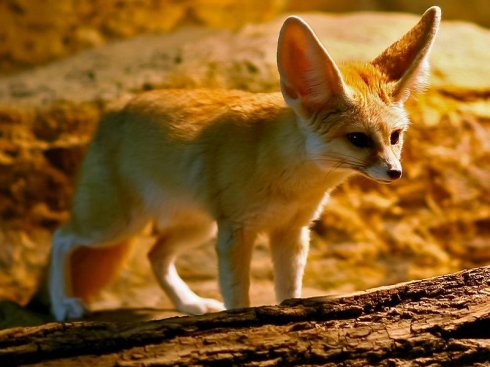(单词翻译:单击)
听力文本
By staying in the shade and licking to control their body temperature,
通过呆在树荫下,并利用舔唾液的方法控制体温
kangaroos manage to get through the hottest part of the day without heatstroke.
袋鼠便能熬过一天中最热的时段,而不至于中暑。
But for the majority of desert animals, this strategy would not be enough for survival.
但是对于大多数沙漠动物来说,光凭这些手段还不足以在此生存。
The extraordinary ears of the fennec foxes of Africa radiate heat,
非洲的耳廓狐长有奇特的大耳,它们能散发热量
but the animals have another way of keeping cool.
不过动物也有其它保持凉爽的方法
They spend their days underground and only emerge at sunset.
它们白天呆在地下,直到日落之后才会出现。
Darkness brings huge changes.
夜晚的情况变得很不一样

In the Sahara, the temperature can drop as much as 30 degrees during the night.
在撒哈拉沙漠中,晚上的气温会下降整整30℃
So it's cool enough to allow these desert fox cubs to play.
在如此凉爽的时候,小耳廓狐也能尽情玩耍。
All sorts of creatures now appear, including some really unexpected ones.
此时各种各样的动物都开始现身,包括一些意想不到的动物。
Toads have permeable skins and would quickly die from desiccation out in the daytime heat.
蟾蜍长着透水的皮肤,若是在白天的高温下,它们很快就会因为脱水而死。
It's only now that they can leave shelter.
所以只有到了晚上它们才能离开庇护所
The same is true for scorpions, even though their shells are actually watertight.
蝎子也是同样的情况,尽管它们的外壳其实并不透水。
视频及简介
陆地的表面大约30%部分是沙漠,这些地区虽然严重缺水,生态系统却异常的多样。揭开沙漠地区的生存秘密,体验这种动态系统中短暂的自然本性。


